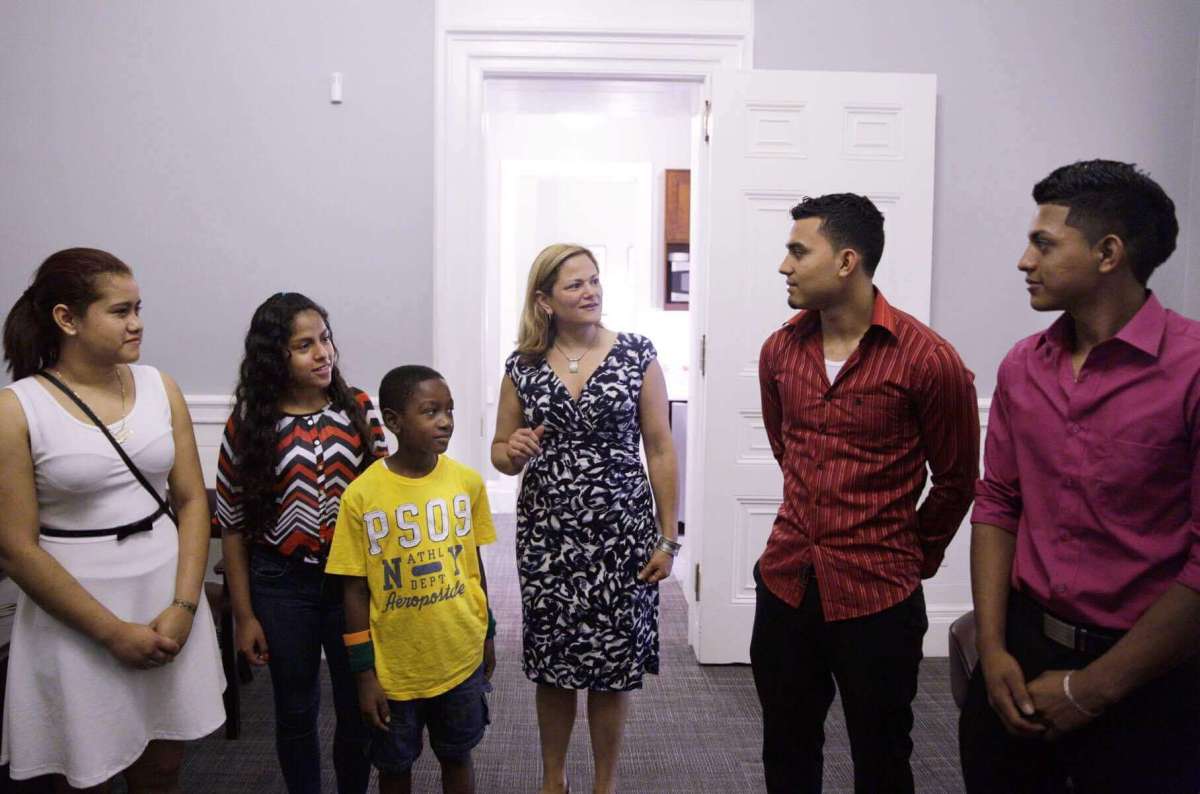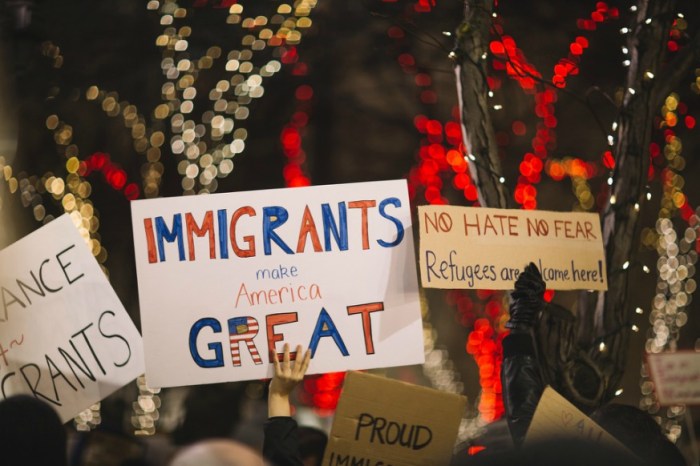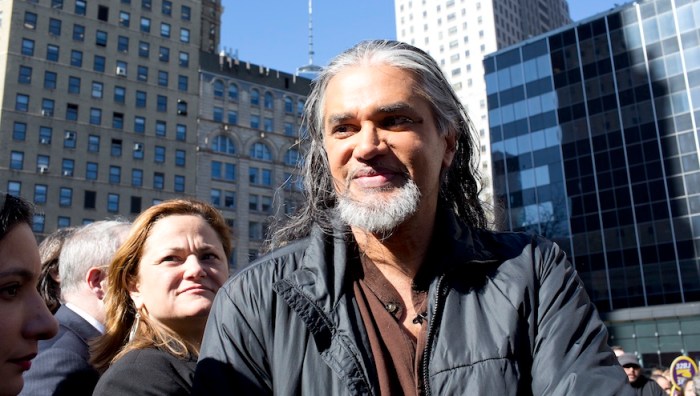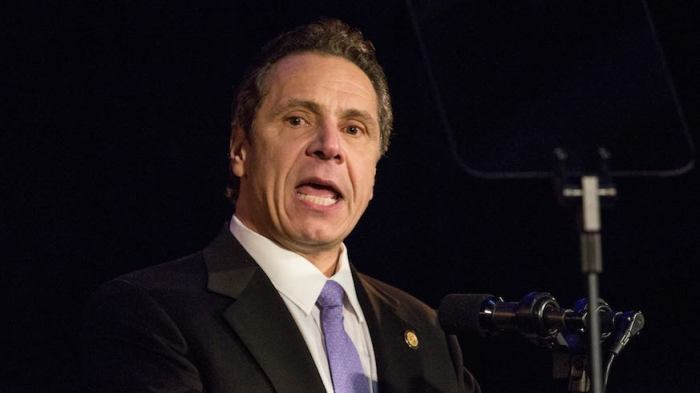A row of young immigrants who escaped violence in their home countries stood behind City Council Speaker Melissa Mark-Viverito inside City Hall in July.
All of the children were being helped thanks to the council securing almost $2 million for legal assistance for unaccompanied minors. At the time, the speaker pleaded that the issue be humanized.
RELATED:NYC stands to lose $150M in services, 1,000 city jobs with latest GOP sanctuary city bill “Let’s not forget that when these children were coming over the border, there were people within our country who rejected them, and used horrific language as if they were animals,” Mark-Viverito said Tuesday. The first Latina to hold the speakership, Mark-Viverito said that same rhetoric being bandied about by leading presidential candidates and their supporters makes the council’s immigration reforms more important than ever. New York City’s long history and international reputation as an immigrant city are part and parcel to reforms instituted at a time headlines are crowded with references to refugees, border walls and travel bans, the speaker said. On Wednesday, council members will evaluate its efforts for the young and undocumented at a hearing to evaluate how the city has responded to the influx of unaccompanied minors stuck in the city’s immigration court system. RELATED:NYC launches new municipal ID card despite broader immigration questions “The council has achieved so much in the last two years,” said NYC Immigration Coalition Executive Director Steven Choi, “whether you’re talking about access to legal services or the more symbolic issues around immigration rights.” Largely in lockstep with an immigrant-friendly agenda laid out by Mayor Bill de Blasio, the Council also overwhelmingly approved a municipal ID card program that registered more than 600,000 New Yorkers — including many otherwise undocumented residents. A spokeswoman for the de Blasio administrationdescribed the council and Mark-Viverito as “strong partners” and “integral in moving our city forward on issues that impact so many New Yorkers.” The previous council under Christine Quinn, often also in collaboration with former Mayor Michael Bloomberg, invested in reforms and programs targeting immigrant communities that included anti-fraud workshops for green card applicants, greater language access and limited cooperation between local authorities and the Immigration and Customs Enforcement agency, declining requests to detain suspects without a warrant from a federal judge. RELATED:City says 2 percent of IDNYC applicants rejected or stalled — including Metro reporter The revised relationship with federal authorities was originally sponsored by Mark-Viverito in 2011 and bolstered twice over since then.
“We’re no longer contributing to putting low level offenders on the track to deportation and rip families apart,” she said.
But some observers take issue with the city’s broader immigration reforms. When the council passed its first detainer bill, even Mayor Bloomberg at the time said the city was “not above the law.” More recently, lawmakers rebuffed worries that the municipal ID bill included a sort of database kill switch in case a less immigrant-friendly White House took office come 2016.
RELATED:Immigrants’ artifacts to return to New York’s Ellis Island “That displays an alarmingly obstructionist intent, but it is consistent with the city’s move to block ICE from access to the jails, and to block corrections officers from communicating with ICE,” said Jessica Vaughan, a policy director for the Center for Immigration Studies, a nonpartisan group that supports limits on immigration. “This shows that the main goal of these policies is to obstruct immigration enforcement of all kinds, even against criminals — not to increase public safety or security,” Vaughan added. Vaughan said what New York City does on immigration matters because it often serves as a model for other cities. At the same time, she said, it represents one side of the spectrum of policies, not unlike like leaders in Arizona and Indiana favor the other side. Ken Sherrill, a professor emeritus of political science at Hunter College, argued New York’s relevance outside of the five boroughs is limited to relationships with other big cities pursuing similar reforms, rather than with Washington D.C. or Albany. RELATED:Percentage of immigrants living in NYC highest since 1910 “At least not as long as urban interests like immigration aren’t represented in the state Senate or Congress,” he said.
City Councilman Carlos Menchaca, who leads up the council’s immigration committee, argued that even if the city doesn’t represent the entirety of the country, it can still lead.
“In two years, we’ve transformed the entire landscape of how the city intergrates our immigrant community,” the Brooklyn councilman told Metro.
Menchaca added that the committee was still mulling over a controversial bill that would explore giving non-citizen residents the right to vote in local elections, which he described as vital to driving the civic participation of every New Yorker. “We’re going to continue to push the envelope on this,” he said. “We know we’re on the right side of history.”
NYC lawmakers take stock of local immigration reform amid national debate

William Alatriste/NYC Council

















